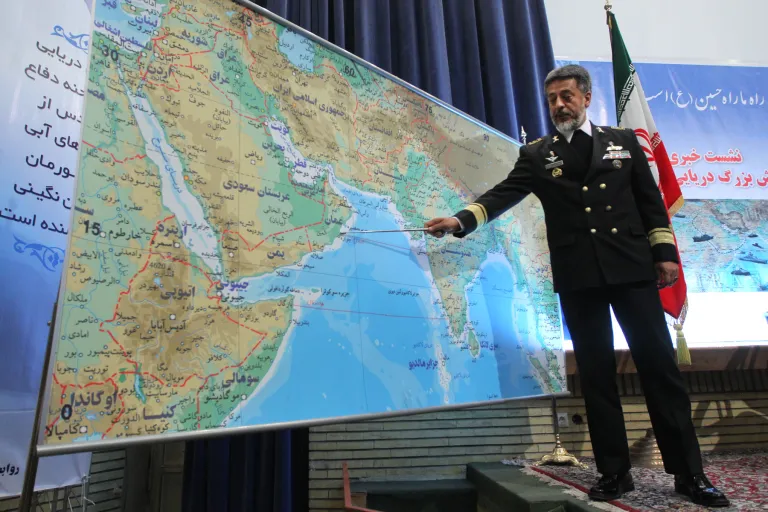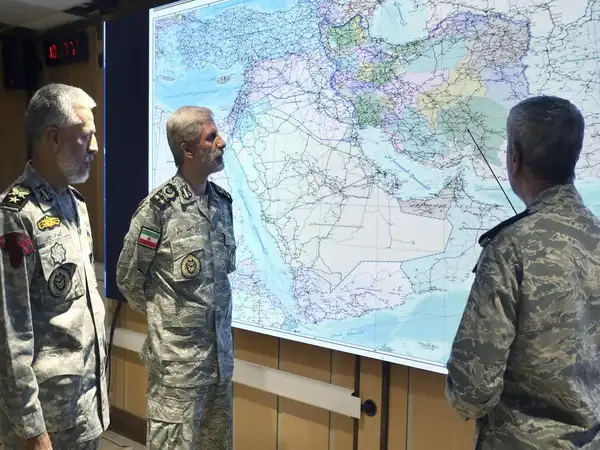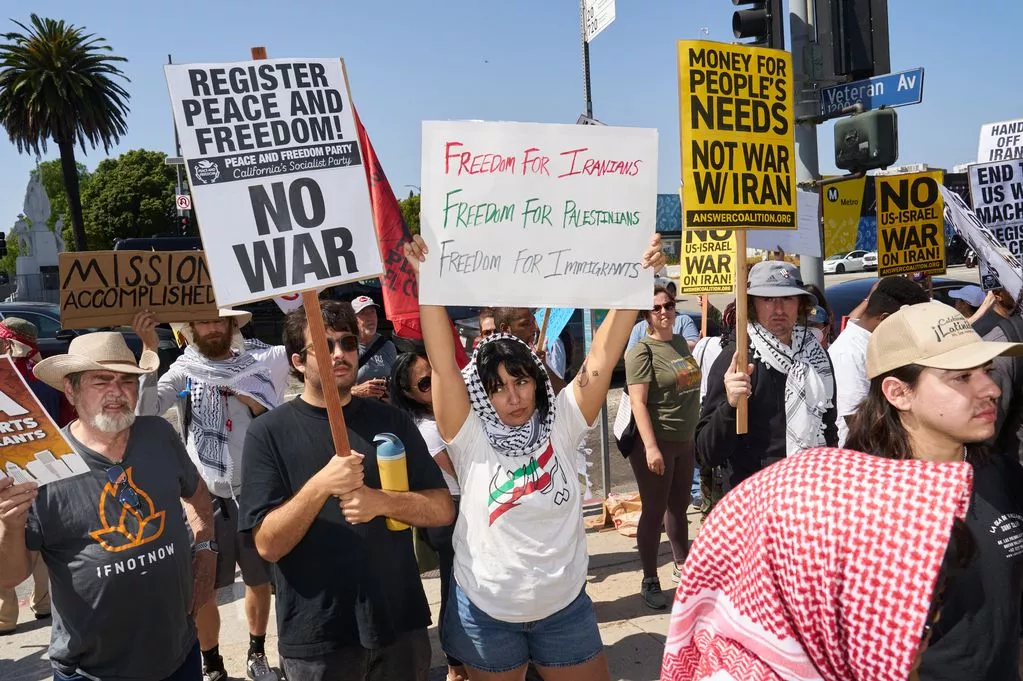The confrontation between Iran and Israel, which has now drawn the United States into direct warfare, is rooted in decades of complicated history. Today’s dangerous escalation — triggered by an existential fear for Israel’s existence — was decades in the making. It is a trajectory that began with a once-close alliance between Iran and Israel during the reign of Shah Mohammad Reza Pahlavi, later shattered by the Islamic Revolution, and one that was eerily anticipated by a Mossad operative long before the bullets began to fly.
As the Mossad station chief in Tehran in the late 1970s, Reuven Merhav was tasked with maintaining Israel’s vital intelligence partnership with its most important Middle Eastern ally. Under the pro-Western Shah, Iran and Israel had deep political and security ties; they were united by their mutual suspicion of Arab nationalism and Soviet influence. Israelis trained Iranian security forces, conducted business with Iranian companies, and enjoyed diplomatic privileges in Tehran. The relationship seemed stable enough to last for decades.
But during a trip to Kish Island with Israel’s ambassador, Uri Lubrani, Merhav noticed troubling signs that the Shah’s grip on power was weakening. The opulence of Kish, and the Shah’s apparent confidence, masked a simmering resentment across the nation. Merhav returned to report that Iran was a time bomb. “I’m worried that this friend of ours will soon be an enemy,” he told colleagues at home. The Shah was losing support, and revolutionary fervor was brewing. Both Mossad and the CIA dismissed these warnings as too alarmist.
Within a year of Merhav leaving Iran at the end of his tour, his fears were vindicated. Iran’s streets exploded with protests and the Shah, long thought unassailable by his Western allies, was forced into exile. Ayatollah Ruhollah Khomeini returned from France to usher in an Islamic regime that immediately severed all ties with Israel. The Jewish state’s diplomats and operatives were hurriedly evacuated, while anti-Israel slogans like “Death to Israel” began to ring out across Tehran.
This was the birth of a bitter enmity that had no precedent. Iran and Israel had once been strategic partners, sharing no borders and no obvious conflicts of interest. Yet overnight they became sworn enemies — a transformation driven by revolutionary ideology and Khomeini’s vehement anti-Zionism. The revolutionary leadership painted Israel as an illegitimate occupier and expanded that narrative into a defining feature of its new identity. Western powers that had once embraced Iran’s monarchy were cast as enemies too, with America dubbed “the Great Satan.”

The Iranian revolution turned Tehran into a hub of radical anti-Israel activism. Protests and state-sanctioned chants of “Death to Israel” became commonplace. The Basij militia, an arm of Iran’s Revolutionary Guard, trained youth to see the Jewish state as a mortal enemy. Throughout the 1980s and 1990s, Iran funded Hezbollah and Hamas and was implicated in deadly attacks on Israeli and Jewish targets worldwide, including bombings in Argentina. When I was The Guardian’s Tehran correspondent decades later, I could hear these chants from my own balcony in north Tehran. Even graffiti in historic sites like Naqsh-e Jahan Square reflected this new ideological hostility.
Yet Merhav was not the only one to recognize this shift. Throughout the 1980s, as Iran fought a brutal eight-year war with Iraq, some elements of Israel’s intelligence community held out hope of rapprochement. They secretly supplied arms to Tehran — a calculated gamble that Iran would prefer dealing with Israelis over Iraq’s Saddam Hussein. The gesture backfired. Iranian forces gladly took the arms but rebuffed all overtures to normalize relations.
By the time Supreme Leader Ali Khamenei succeeded Khomeini after his death in 1989, anti-Israel rhetoric had become an article of faith. Khamenei, even more ideologically opposed to Israel than his predecessor, saw the Jewish state as a cancer in the region. To him, the anti-Israel stance was not just about foreign policy; it was a way of preserving the regime’s revolutionary credentials and deflecting attention from its own economic failures and repression at home.
Khamenei’s worldview was also steeped in prejudice. Iranian scholars like Abbas Milani of Stanford University have noted Khamenei’s deep-seated anti-Jewish sentiments, which he displayed in translations of Sayyid Qutb’s Islamist writings. Milani argues that Khamenei’s personal animosity toward Israel, and his commitment to its destruction, has become a self-serving feature of Iranian state ideology. Tehran’s harsh anti-Israel rhetoric has allowed Iran’s hardliners to consolidate power and justify continued isolation.
That isolation, ironically, has created lucrative opportunities for Iran’s ruling elite. Economic sanctions, tightened by Iran’s bellicosity toward Israel and the West, have handed control of Iran’s economy to Revolutionary Guard-linked companies. Businessmen close to the regime monopolize everything from cars to food production, shielded from foreign competition by the state’s international pariah status. Hatred toward Israel has become a political and economic lifeline for these actors, making rapprochement impossible.
Iran’s nuclear ambitions added another layer of tension. The Jewish state, which had secretly supported Iran’s nuclear program under the Shah, was deeply alarmed when Iran resumed enrichment under Mahmoud Ahmadinejad’s presidency in the mid-2000s. Ahmadinejad became internationally notorious for denying the Holocaust and calling for Israel to be “wiped off the map,” though his remarks were translated differently by some. The symbolism was clear: Iran had become a strategic threat with an anti-Semitic edge. Its leaders supported armed proxies on Israel’s borders and pursued a clandestine nuclear program that Israelis feared would enable a genocidal attack.

Israel’s policy shifted toward confrontation. Mossad operations sabotaged Iranian nuclear facilities and took aim at Iran’s military leadership. Shadow warfare — cyberattacks, assassinations, sabotage — became the norm. Iran responded by intensifying support for Hezbollah and other anti-Israel militias and by pursuing regional dominance in Syria, Iraq, and Yemen. Relations between the two countries spiraled further into a proxy war fought across the region.
For most Iranians, this all seemed far-removed from their daily struggles. Many hoped for normalized ties and better economic prospects. Even after years of anti-Israel propaganda, Iranians I spoke to in Tehran rarely wished harm upon Israelis; they simply wanted an end to isolation and hardship. But their aspirations were sidelined by the Revolutionary Guards and clerics who shaped policy. Khamenei relied on fear of Israel to bolster his legitimacy and marginalize dissent.
That dynamic persisted into the 2010s and 2020s, when Israel kept a watchful eye on Iran’s regional influence and its advancing nuclear program. Israeli leaders argued they had no choice but to prepare for the worst. Under Benjamin Netanyahu especially, anti-Iran rhetoric became a central pillar of Israeli foreign policy. It fueled a cycle of pre-emptive strikes, retaliation, and continued threats of existential war.
When fighting finally broke out — an open war that pulled in the United States — it was the grim fulfillment of Merhav’s prescient warning. The spark was a long-heralded fear for Israel’s existence, ignited by Iran’s nuclear advances and a brazen rocket attack by its militias. The United States, fearing a broader regional war that could endanger its troops and allies, intervened directly. Donald Trump, from the White House, announced strikes on Iran’s Fordow, Natanz, and Isfahan nuclear facilities — fulfilling a commitment to stand by Israel and prevent a nuclear-armed Iran.
The escalation shattered the status quo. Overnight, what had been proxy wars and covert strikes burst into full-scale war between two countries that had been friends within living memory. This was the very outcome Merhav had warned of decades earlier as he left Tehran with a final farewell to his successor: “I’m giving you Iran with a time fuse.”
I was reminded of Merhav years ago when I happened to meet him on a train from Hamburg to Prague. It was a chance encounter: I was reading a Farsi textbook, hoping to return to Iran after my forced departure as a foreign correspondent in 2007. The elderly man across from me noticed my book, greeted me in fluent Farsi, and introduced himself simply as Reuven. My eyes widened as I realized who he was.

Although careful and reserved — acknowledging only that he had once worked for Israel’s foreign ministry — Merhav spoke warmly of Iran and its people. His recollection of Tehran before the revolution was tinged with sadness. Merhav had witnessed firsthand the collapse of a rare alliance and its replacement by mutual suspicion and hate. Our brief conversation drove home for me that the seeds of the current war had been sown decades earlier.
That recognition was confirmed by my years reporting in Iran. The chants of “Death to America” and “Death to Israel,” so prominent in public discourse, masked a deeper ambivalence among Iranians toward the outside world. There was a sense that most people wished for friendship rather than conflict — if only they could separate state policies from their own hopes. Many ordinary Iranians were tired of isolation, weary of living under a government that thrived on external enmity.
And yet, the rhetoric persisted. Even as sanctions crippled Iran’s economy and civilians suffered, the leadership clung to its anti-Israel position. That stance was exploited by Khamenei to present himself as the vanguard of resistance against Zionism, a role that carried immense political and religious weight in his worldview. Allies like Hezbollah and Hamas carried on Iran’s campaign, launching rocket and suicide bomb attacks that fueled fear inside Israel. Every violent provocation prompted harsher Israeli retaliation, and every cycle of violence deepened the enmity.
Sources




